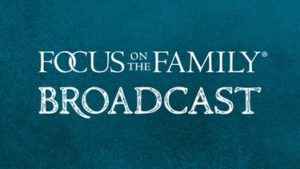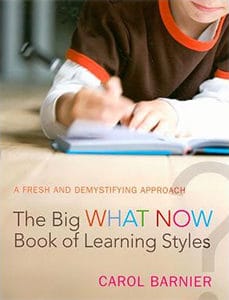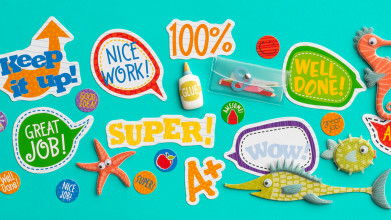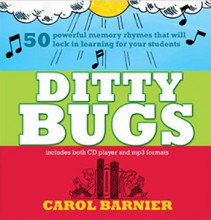Opening:
John Fuller: So, here’s the scenario. It’s late. It’s a school night and your child has spent more than three hours attempting to do some schoolwork, but it’s pretty clear they don’t get it, they don’t understand the assignment, and they haven’t done any preparation at all for the test tomorrow. And you’ve got this note from the teacher warning you about a failing grade and you’re seething. What do you do now? We’re gonna address that challenge and others like it today on Focus on the Family as we help you improve your child’s educational prospects. Your host is Focus president and author Jim Daly, and I’m John Fuller.
Opening Wrap:
Jim Daly: John, I think you can feel every parent cringe when you uh, describe that situation. We’ve all been there, and we really don’t wanna go through it again. Um, because when your child is struggling in school, it creates a lot of stress and anxiety in the family, and I know we in the Daly household have experienced it and sometimes, that tension is the result of your own expectations and approach as a parent. The fact is kids learn in many different ways, and the learning style that worked best for you, may not be the same for your child. We had educational experts like Kathy Koch and Cynthia Tobias on the broadcast. They always resonate with you as listeners. Uh, they have reinforced that very message. True success comes from studying your children and discovering what motivates them. That’s the key because you want to develop the natural curiosity every child has, and you wanna help them become enthusiastic about learning.
John: Yeah, they’re all so very different. I remember when several years ago, my wife was describing the homework assignment to my son, Zane…
Jim: (LAUGHTER)
John: …who was in elementary school at the time, and he had to write out his spelling words five times, and she looked at me and she said, “I get why they’d it this way, but that’s not how he learns. He learns by speaking the words aloud over and over again, not by writing them down. It’s really difficult for him.” So, I think you’re right. Every child needs a pretty specific approach.
Jim: And that’s what we’re gonna hear more about today. Uh, we’ve pulled out a great conversation that you and I recorded a few years ago with Carol Barnier, and she’s an author, speaker, teacher, who specializes in helping kids with learning challenges, and as you’ll hear, she has some hands on experience working with her own children. Carol’s got a lot of creative and fun ideas for all of us parents, but most importantly, you’ll hear her heart for the child who is hurting, who feels like failure, and maybe wonders if getting an education is a waste of time. If you know a child like that, hang on. Carol’s got some great encouragement for your family.
John: She does, and here’s how we began the conversation with Carol Barnier on Focus on the Family.
Body:
Jim: Now you’ve written this great book called The Big What Now Book of Learning Styles. I mean I love the title. How’d you come up with that, The Big What Now? (Laughter)
Carol: Well, ‘cause it seemed to me that so many of the learning style books that I was looking for and that I found, spent so much of their time and energy and pages dedicated to comin’ up with a really cool label for my kid. So, you know, you’d work through the survey and you’d get to the point where you’d go, “Well, he’s a global reflective social kinesthetic wombat.” Okay, great. (Laughter) And now I’m … and the remaining 10 percent they might give you some ideas on how to teach to it and I thought, that’s just so backwards because the victory in the process comes in the teaching, not in the “what do I call him before I teach him?” And so, I thought, okay, I know what he’s called, what now?
Jim: Huh.
Carol: And that’s where the title came from, this whole concept for me, the whole book, the whole discussion is about, okay, what now? How do I teach math on Monday morning to a kid who can’t sit still or falls out of his chair or he could spell the word five different ways? They all look good to him. You know, what do you do with that kid? What now? So, that’s where the title came from.
Jim: But let me ask you though, in trying to be a good observant parent, it’s important to understand. I would think some of that labeling, it sounds bad, some of it must serve a purpose for the parent to better understand what type of child they’re working with. Is that … there’s gotta be some positive attribute to it, is what I’m diggin’ for here or are you saying, not really, just …?
Carol: Well, I think there’s value in knowing what you’re working with. I mean, I long said, specificity matters, and I think my best example of that is, when the Prayer of Jabez book came out, like everybody else, I said, “Lord, enlarge my territory,” but I gained 17 pounds. So, I think being (Laughter) specific is really—
John: Be careful what you pray! (Laughter)
Carol: –important, okay. But in the end of every single learning styles book I’ve ever read, they all come to this same conclusion. They all will tell you, in truth, every one of them mixes styles. Be sure you incorporate all teaching methods in your … you know, in how you teach and how your child learns. And I thought, well, why don’t we just start there then? Why don’t we figure out how to teach from a variety of learning styles so that, that experience is multilayered and rich and will incorporate your child’s style but will also involve other styles as well.
Jim: Carol, you have done a lot of homeschooling, as well. Your son, I think, didn’t fare too well in kindergarten.
Carol: No, he flunked kindergarten.
Jim: Okay (Laughing), but—
Carol: Is it possible to—
Jim: –I’m won …
Carol: –flunk? I think he flunked kindergarten. (Laughter)
Jim: Okay, so what … were you panicked? There’s a lot of parents in that spot right now.
John: Hm.
Carol: Yeah.
Jim: Jean and I kinda felt that with our oldest, too, ‘cause he was struggling in some areas. I think it ended up being more disinterest and boredom than anything but talk about that parent that in the elementary school years, their child is not succeeding. We can tend, especially I think in the Christian community, we tend to be pretty hard, ‘cause we think, okay, what have we done? Where have we blown it? But talk about that self-diagnosis that occurs and what did you and your husband do when your kindergarten child was comin’ home with a failing grade?
Carol: Well, something else you said really struck me, where we blame ourselves. I think we’re also too quick to say this is a character issue in our child, that they are displaying, you know, the lack of discipline. And it can mask as a lack of discipline when a kid is just really discouraged.
Jim: Hm.
Carol: And so, they’re thinking at this point, I just can’t do this, so I’m gonna act like I don’t care and it’s a smoke screen we should never, ever buy into, because there’s not a kid on the planet who wants to be the only one in the room who doesn’t get it.
Jim: There’s no adult that wants to be that either—
Carol: Right.
Jim: –to be honest.
Carol: Exactly, so, in answer to your question, when my son did not do well in kindergarten…um, the biggest fear initially was, that he couldn’t read and all the other kids, except for two kids, you know, graduated from this kindergarten program able to read and my son was one of the two who did not. So, my initial panic was all about, oh, dear, we’re setting up this lifelong, you know, problem and I didn’t realize at the time that a 5-year-old who cannot read is not a crisis, but at the time I thought it was.
So, we began homeschooling, you know, him just out of desperation. We didn’t know what else to do and the public schools had said that unless he’s medicated, he’s not gonna be able to function in our classroom. And I didn’t–
Jim: That’s really interesting, that that’s where they turned to.
Carol: –and I didn’t fault them for it. When we went to visit the classrooms and I saw my son interacting with the other kids, I got it. I mean, I understood why these teachers said this isn’t gonna work. And we couldn’t afford private school, so we began homeschooling, sort of kicking and screaming because I wasn’t … I really didn’t consider myself a homeschooler. For me, homeschoolers all lived in Idaho and raised goats and had 26 children and you know, I just didn’t see myself in that community. But we began and about six months later, it was about as desperate a situation as you can imagine, and it was because I was applying traditional schooling methods at home. I basically brought home the very model that had failed him, brought it into our home. I thought I was just gonna sort of put it on steroids, but it was basically the same model.
Jim: Huh.
Carol: And it wasn’t until about six months in where I said, this just isn’t workin’. I’m throwing it out and we’re just gonna experiment and see what works. And it was by virtue of doing that, that we figured out how this kid learns and the many layers of learning that you can bring to the table.
Jim: For that parent that is struggling, you use a word picture in your book that describes that struggle and how a student might feel. You alluded to it a moment ago, but I want to come back to that. Paint that picture where a child is struggling and what you described in the book, so that we adults, we parents can better understand what they’re feeling.
Carol: If you’ve never, ever struggled with a learning disability or a learning challenge, it just may seem so obviously easy to you. You can’t figure out what’s going on with this child. In the first place, we tend to go is to, like I say, to a discipline or character issue.
But the way I try to make folks understand it is, I want you to imagine I’m teaching you how to write your letters. Let’s pretend we’re back in kindergarten and here’s my method. I’m going to have you hold the writing instrument in your non-dominant hand. I’m going to blindfold you. I’m going to only give you auditory cues on how to draw the letters.
You’re going to be drawing them blindfolded, but here’s the best part. I’m going to be giving you cues that will have the letters go down in a backwards orientation, so you are going to have to mentally see them and flip them, to put them in the correct place. Now hopefully, you’re listening to that and you’re going, “That’s crazy; I couldn’t learn to—
Jim: Too complicated.
Carol: –write that way.” Yeah, there’s no way. But here’s the thing I want you to imagine. And you’re right, it is crazy; I made it crazy, but I want you to imagine that everybody else in my class is learning just fine. In fact, you’re the only one who seems to be struggling and instead of both of us obviously concluding this method is not going to work for you, what we … where we tend to go is, “Well, since it’s working for so many others, you must be broken. There must be something wrong with you. You’re not trying. Maybe you’re lazy. Maybe you’re just not that bright.” You know, we go all these places we go, when the truth is, the kid just needs a different approach to being taught that.
Jim: That’s a really important point and we need to put some emphasis on that, that it … you don’t have to go to broken and kind of the misfit immediately. I mean, there may be some issues there but those are things you can deal with subsequent to what are the core issues? That … parents need to hear that encouragement, Carol. It is so important that we don’t immediately jump to “You’re defective” and communicate that to our children.
John: Hm.
Jim: Um, how does a parent grab those words before they get out of their mouth? What are some things, some cues that you would say to them, when you’re in that situation with a first, second, third-grader or kindergartner, in your case, how do you think? ‘Cause you aren’t skilled at this. This is the first time you’ve gone through it, maybe your oldest child and now you’re feeling like, wow, I’ve got a defect. What do you do to avoid that?
Carol: There’s a philosophy I created a long time ago that served us very well and I call it, “Being the keeper of the keys.” And that is where a parent will say to their child, “If you tried to understand this and you really didn’t understand it, that means it was presented to you with the wrong key to unlock that information. That’s not your fault. If you truly tried and you didn’t get it, there is no shame in not understanding it. My job is to go find another key, to find a different way to approach this, so we can find out which way will unlock this information for you, given how you learn.” And any parent can say that to any child. You don’t have to have the answer, but you do have to have a willingness to go find the answer.
o that says to the child, if I don’t understand, I’m not defective. I’m not stupid. It was just the wrong key and that just takes the burden off of them for not understanding. No one should have to feel shame for not understanding.
Jim and John: Uh-hm.
Carol: And our job, I believe, is to just present key after key after key until we find the one that unlocks it for them.
Jim: Well talk about what steps happened for Glen, your young son at that time and now you have the benefit of a bit of time passing so you can give us the update. What struggles did you have? What victories did you have in presenting the content in a different way through a home-schooling environment?
Carol: Yes, we homeschooled, but I don’t want anyone listening to this to think that these things only apply to homeschoolers.
Jim: Right.
Carol: And I’ll tell you why. My belief, my conviction is, everyone homeschools. Some of us do it full-time and others do it at night and they call it “helping with homework.”
Jim: Yeah, that’s–
Carol: But all—
Jim: –a good point.
Carol: –of us are invested in our kids succeeding well academically. So, the same things that I did, full-time homeschooling, are easily applicable to a parent who’s working at night with homework. Okay, that said.
So, I’m looking at Glen struggling with a variety of things and when I finally threw out the traditional system, the first thing I figured out was he needs to move in order to learn. And as long as I let him move and it had to be a motion that I would choose because if I didn’t, he would move anyway, but he would do something that really annoyed me or distracted his siblings or damaged the furniture. (Laughter) That was my favorite one. And so, I mean, I would give him a piece of motion that was mindless and repetitive and then he was able to focus on the things that I needed him to focus on.
Jim: Give me an example of that.
Carol: Oh, it … I mean, it changed everything, like for example, sometimes I would just have him putting salt dough on a model of something, just back and forth. Grab some salt, stick it on this cardboard model and we were making a model of an ancient Egyptian house while I read, you know, a book to him, The Golden Goblet, I think. And another time I might have him doing something with the pegs of … you know that game, “You Sunk My Battleship?”
Jim: Oh, yeah.
Carol: Okay, well, if you’re gonna get that one out, take the ships away first of all.
Jim: Yeah. (Chuckling)
Carol: He’ll just create World War III and you’ll lose him in the drama but those pegs, red and white pegs, I would have him put in a pattern, a red and white, red and white, red and white, anything that would keep the hands moving mindlessly and repetitively would keep him [focused]. There’s this track in their brain that has to have some kind of motion on it in order for the processing tracks to work.
Jim: That’s really interesting and I think some parents, I think I would fall into this camp, to be honest, I would see that as a distraction—
John and Carol: Uh-hm.
Jim: –and you need to not do that in order to concentrate.
John: Yeah.
Jim: But you’re saying the exact opposite is likely.
Carol: Not only likely, test it. I mean, we’ve all been told, you know, if you’re really respectful, you’re gonna look me in the eye. You’re gonna sit really still.
Jim: (Chuckling) Right.
Carol: Your hands are gonna be really quiet and the problem is, some kids simply cannot learn that way. So, they listen to us and then they start moving. Pretty soon they’re really wiggling, and we go, “Stop that; that’s disrespectful.” And they’re like, “Okay,” ‘cause they want to be respectful.
Carol: So, then they stand up really straight and they look us in the eye and pretty soon, they’re wiggling again. (Laughter) You know, they cannot help it. So, once you own that … I’ll tell you my favorite example. Sometimes I think we want the Apostle Paul; what we’ve got is the Apostle Peter. Talk about—
Jim: Ah.
Carol: –a guy who’s rash and impulsive and talks when he should be quiet and he leaps out of a perfectly seaworthy boat. And I mean, he gets mad and he cuts off someone’s ear. I mean, more than any other person, Jesus turned to him and said, “Sit down; stop that,” you know. And I think sometimes we are trying to turn our Apostle Peters into Paul’s; that’s studious, solid, you know.
Jim: Well-studied.
Carol: And yeah and we get Peters and yet, Peter was on the inner circle. Peter was Jesus’ friend. Peter was the one Jesus was planning on using in the early days of the Church. So, meaning that we have these Peters, I think we have to accept that they need to move to learn and that’s why I’m convinced Jesus walked as He talked. They were gleaning in the fields. They were on the seashore. They were casting nets. He was always in motion with a lot of these guys.
Jim: Hah, that’s interesting.
Carol: Very different.
John: It’s all good to hear from years of perspective, Carol, but when you were in that moment with your son, I’m guessing that you had moment of doubt and struggle and you had a talk with your husband that was really, you know, raised-level of conversations. Talk to that parent right now who’s thinking, “Okay, that’s good for you. Right now, it’s all struggle all the time for me.” What’s the starting point?
Carol: There are two approaches. We tend to think of like a macro approach of big things we can do, but when it’s homework that night due the next morning, there are these micro, almost emergency things that we have to do.
And sometimes kids will open up their math book, for example and a math lesson that should take 20 minutes will take three hours. Well they can become overwhelmed by just looking at 45 math problems. So, the first thing I would do, take the book away and start handing them a math problem on a scrap of paper one at a time so they only have to focus on one thing at a time.
Jim: That’s interesting, yeah.
Carol: And for some kids, that’s all it takes. The anxiety can go down because they’re not looking at all those problems. Another thing I recommend is for a lot of kids who struggle with fine motor skills, get them up. Put them in front of a white board. Spend 20 bucks on a white board and now you’re using your shoulder muscles, gross motor skills very, very different and for an awful lot of kids, simply being up and able to move while they work is so different and so much more effective than working with a pencil and paper, you know, tightly folded over their desk. And sometimes I would take the answers to the math problems and I’d put them on 3 x 5 cards and I would just throw them out all over the floor and I would say, “Okay, go find, you know, two numbers multiplied together that equal 15 and they have to run and go grab the factors of 15. So anytime you can get the pencil out of the hand of some kids and find another way to do the lesson, suddenly, that three-hour lesson becomes what it should, 20 or 30 minutes, but it also sticks more because they’re in motion.
John: Hm.
Jim: Carol, it feels good what you’re saying and I’m sitting here applying it to my two boys. I’m going, oh, okay. Troy would benefit from that kind of kinesthetic approach or the movement, ‘cause I’ve said to him before, “Troy, you gotta sit still; let’s lis[ten].” So, I’m guilty of that. And at the same time, it takes effort as a parent. We’re busy. We’re distracted. Talk about that for a minute, that you know, when you’re sitting down homeschooling after a day’s work and what I mean by homeschooling is what you said. They’ve got their homework, either from the home or from school and you’re sitting with them trying to help. And Jean, my wife, is fantastic at being with them, but as a father, sometimes I’m tired and all those things and I’ve got Troy wantin’ to move around and I’m trying to think, put numbers on cards, write all their math problems out. I’m going, “Oh, no.” It sounds like a lot of work. Talk about the importance of it though.
Carol: Well, I would say choose one thing. What I often say to folks is if you believe you have to go home and make all of your child’s work into interesting fun games, you’re gonna send me hate mail in about a week. (Laughter) So choose the thing they struggle with the most. Come up with something simple and you know, and that’s why I began gathering ways of doing this ‘cause I know an awful lot of folks are just struggling to be creative and so, I just put all of these things together, almost like in cookbook style, of things to try. But try one thing and what will amaze you and what will motivate you is the success that comes forward from your child. Start there with one thing and I believe it develops its own momentum in the process, but just start with one thing.
John: Some wonderful ideas from Carol Barnier on Today’s Focus on the Family with Jim Daly, and she has a great resource called The Big What Now Book of Learning Styles, which helps you dial into your child’s ability to learn and what works best for them in that process. If you’re looking for more back to school encouragement besides that book, check out our Thriving Student podcast. We have a series of six episodes exploring the emotional, physical, social, and spiritual health of your child. Details about these resources and more at focusonthefamily.com /broadcast, or when you call 800, the letter A, and the word FAMILY. And here’s more now from our conversation with Carol Barnier on Focus on the Family.
Jim: Carol, let me ask for the parents who have been struggling. Maybe they didn’t pick it up as a kindergartner or a first grader, anytime in early elementary school years. Maybe their child’s in sixth, seventh, eighth grade. And some weaknesses will appear in those junior high years because they’ve been able to get through elementary school relatively easily, and then they hit junior high and you got so much going on there. Talk to that parent, who’s not been as well in tune with some of those issues that their student might have been going through. They’re makin’ B’s and C’s, maybe the occasional A, but they’ve settled in. You know, he’s doing pretty well or she’s doing pretty well, but talk about waking up to that engagement and maybe you’re missing an opportunity to be more integrated in your child’s learning styles. Talk about that scenario, that parent.
Carol: I think the best way to be integrated into your child’s academic efforts is to decide to learn along with them and not this sense that I have to know and understand this before I teach my child, but rather let’s explore this together.
But that happened as I learned along with my children. I was a big believer in involving all the senses in the learning experience. History in particular worked extremely well with that. So, I didn’t just read to them from a textbook about history. We dressed up. We re-enacted events from history. We ate food from the time period. We listened to music from the time period. I mean, anything we could do to sort of put ourselves in that period we would do. And of course, it’s far more memorable when you’ve been, I don’t know, Queen Nefertiti, than when you’ve read about her, you know.
Jim: Yeah, action oriented.
Carol: Absolutely and not just involving the kinesthetic mode, but the auditory mode, too. I like my kids to not just hear something that I’ve read to them, but then to repeat it back to me, in this process called “narration,” where they have to hear it coming out of their mouths. And we often tend to think of the auditory learner as someone who wants to hear it, but in fact, “auditories” tend to be talkers, because they hear it differently when it comes out of their own mouth. They’re hearing how it sounds and that’s a very good way to involved them also when they’re writing, is to have them say it out loud, because they will edit in speech things they won’t edit on paper.
Jim: Right. Let’s hit the three that you’ve identified and others, Cynthia Tobias, you know, there’s lots of different models to this. But you land on three core learning styles, so why don’t you share those with us?
Carol: Yeah, I guess in the end I think almost all learning styles have their toes in one of these three camps, where they are either visual or auditory or kinesthetic. And the visual is the one you’ll see most often in the public-school arena. It’s the one that’s utilized most I think, because many of the teachers and students, you know, they just naturally gravitate in that direction.
The kinesthetic involves motion. This is a kid who learns best when he’s moving. And I think when ADHD burst upon the scene, you know, 10, 20 years ago, everybody found kinesthetic ways of teaching, so that one has, I think, found a lot of root within the public-school system, as well. But the auditory one I think is the one that’s most neglected and an awful lot of kids who not just need to hear it and so, you’ve got the kid who’s doing his spelling. He’s writing which may be a struggle already. It’s a visual method.
John: Uh-hm.
Carol: And there’s no auditory component involved in this for him and yet, all of us probably learned to spell Wednesday by saying, “Wed-nes-day” in our head. (Laughter) That’s an auditory, you know, click there. That’s an auditory—
Jim: Oh, that’s interesting.
Carol: –style. Yeah.
John: Uh-hm.
Carol: And you think about how you learned to spell Mississippi. Chances are you had some kind of rhythm involved. And so, if we utilize those kinds of things for auditory kids in particular, that’s really gonna be essential. Math has one of the best opportunities though to utilize for the auditory, to utilize what I call “ditties,” which is rhythmical language.
Jim: “Ditties.”
Carol: Ditties, that’s what I call—
Jim: I like that.
Carol: –them.
John: Is that a technical name?
Jim: Songs?
Carol: Yeah, that’s my technical term.
Jim: Is it a song? And what—
Carol: Well, here—
Jim: –is a “ditty?”
Carol: –here’s one. You just finish a sentence for me. “In fourteen hundred and ninety-two,” everybody knows.
Jim and Carol: Columbus sailed the ocean blue.”
Carol: Exactly and it’s the only date we remember, right, because it came in ditty form. That’s all it is. It’s some kind of rhythmical language.
And ditties, I missed them probably for the first eight years that I taught my kids, but when I discovered that my son was sitting there practicing his spelling by finding rhythms, I thought that makes no sense. This child has no rhythm, I mean none and I was a music major, so I was lookin’ hard and this child had no rhythm. I just kind of dove into it and realized I could give him–particularly math was where he was struggling– I could give him math rules and things that were helpful in ditty form. And what is meant in our house was, every morning you would say the ditty and just you would say it two or three days in a row, two or three weeks in a row. By the end of two or three weeks, you owned it. You didn’t have to memorize it, so …
Jim: That’s a great thing. Do you do ditties, John?
John: I don’t do math,
Jim. (Laughter) I probably should learn some ditties from you.
Carol: All right, do you want to hear a math ditty?
Jim: I need to hear a math ditty.
Carol: All right, I’m gonna do … this is the first ditty I ever gave him and it was on fractions. So, when you hear me talking about how your shoes have to match, what I mean is, your denominators have to match, the bottom part of the fraction, the shoes have to be the same before you add or subtract.
When adding or subtracting fractions (Snapping fingers in rhythm), you can’t lose; just be sure before you start, you’ve got matching shoes. Now once your shoes do match, keep your shoes the same and work straight across the top; that’s the name of the game.
Carol: To multiply two fractions it’s so easy, if you gotta multiply across the top, multiply across the bottom. When you’ve got two fractions that you need to divide, just flip the second fraction and multiply. He said this every day for like two or three weeks (Laughter) and owned it and he had been struggling so much prior to that.
Jim: Man, yeah.
John: Wow.
Carol: And now I have a daughter who’s just about to graduate with a college degree in chemistry. She took ditties with her all the way through college. She was constantly using ditties to memorize formulas and I mean, it just … it was a tool she owned.
Jim: Now some parents just went, “Yeah, I can do that.” Other parents went, “I can never do that.” (Laughter)
John: You lost me at the first snap.
Jim: I mean, yeah, I mean—
Carol: Yeah.
Jim: –well, just (Laughter) being able to put that together.
Carol: Well, you know, when I give a talk, I used to try and teach parents how to do ditties, ‘cause I really do have some thoughts on how they need to be done. And half of the audience is there writing down notes down–
Jim: Yeah.
Carol: –saying, yeah, I can do this. The other half is like ready to kill me—
Jim: Yeah.
Carol: –you know. (Laughter) So I did finally put all my ditties on a CD for what it’s worth and there are ditties out there, you know, available online. You just have to go looking for them.
Jim: Oh, that’s great. So, you—
Carol: Yeah.
Jim: –have ‘em on a CD.
Carol: Yeah, I do.
Jim: Man, I wish I would’ve known that.
Carol: Yeah.
Jim: Maybe there’s still time.
Carol: Yeah.
John: And that’s how we concluded the first part of our conversation with Carol Barnier on this episode of Focus on the Family, and we’re looking forward to sharing the continuation of that with you next time. Meanwhile, contact us about resources we’re mentioned. The Big What Now Book of Learning Styles, where Carol has compiled many of her creative learning ideas and tools, and we also have her ditty books CD if you’d like to get a copy of that. Stop by focusonthefamily.com/broadcast to learn more, or call 800, the letter A, and the word family. 800-232-6459.
Closing:
Jim: John, that was a great conversation with Carol, and I hope our listeners will join us for more next time, and I’d really like to put a copy of The Big What Now Book of Learning Styles into your hands. This is a powerful wok book for any parent who wants to empower their kids to do better in their education, and we can give you a complimentary copy of that when you make a-a monthly pledge to Focus on the Family today. That kind of ongoing support is easy to setup, and it really helps us maintain a stable ministry budget throughout the year. Of course, that means we’ll be able to strengthen more marriages together and equip more parents like we’ve hopefully done today. And give hope to families who are struggling. So please, consider becoming a monthly supporter, or give a one-time gift today. That’s very helpful too. And let me say thank you in advance for your generosity.
Closing Voice Track:
John: You can donate at focusonthefamily.com/broadcast or when you call 800-232-6459. Focus on the Family has so many good resources for you, like our free parenting assessment, that’ll give you a good idea of what’s working well in the family and maybe some growth tips. And uh, be sure to check out our Thriving Student Podcast where we address a number of ways that you can prepare your child for the best back to school experience possible. Details about the podcast, Carol’s book, and the free parenting assessment online at focusonthefamily.com/broadcast. Next time, why expectations for your child’s education need to adapt to your child’s learning style.
Carol: I smacked him on the arm and I said, “I paid good money for this. Write somethin’ down.” (Laughter) And he said something that totally changed me. He said, “If I start writing, I’ll stop listening.”

















